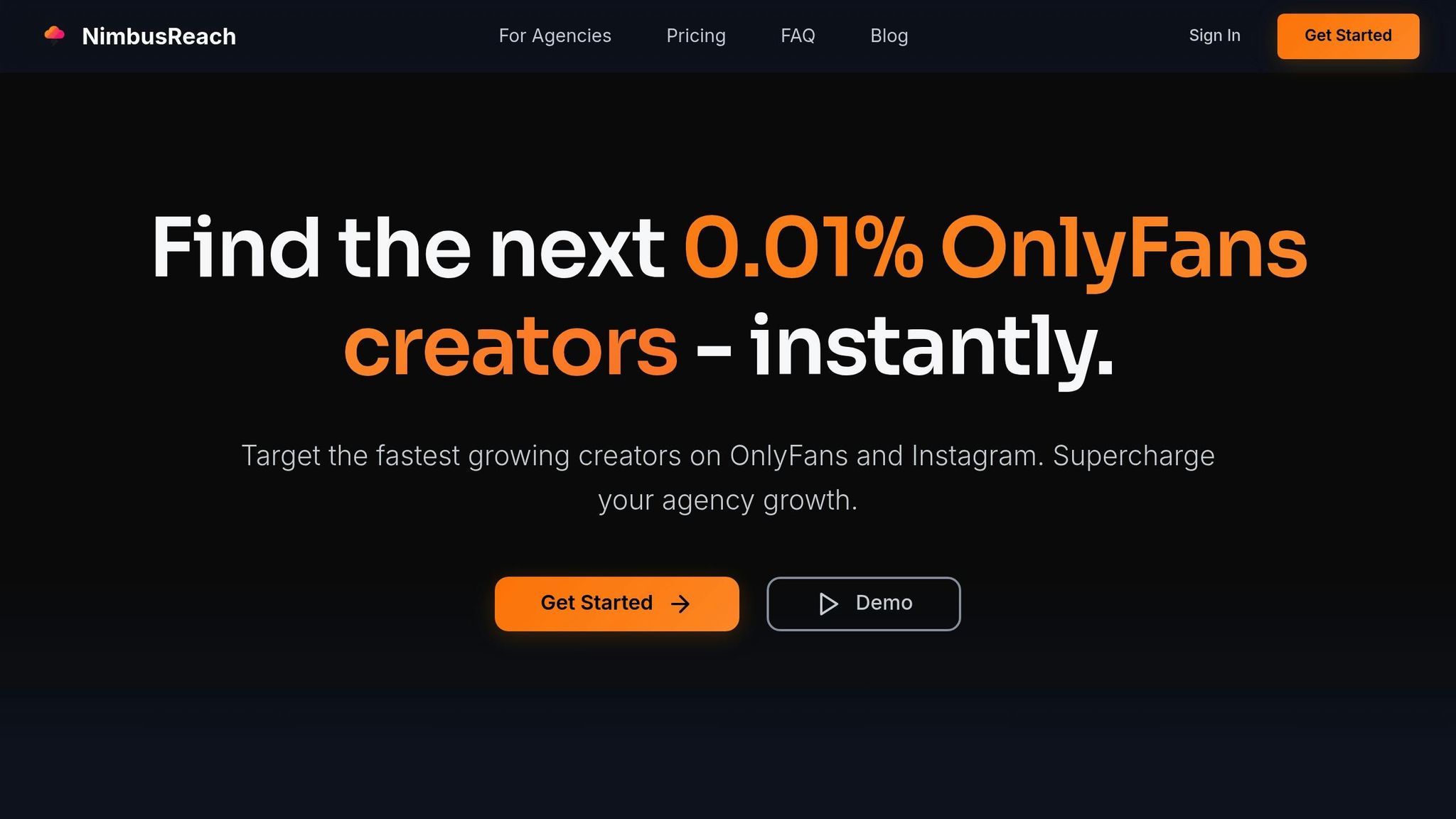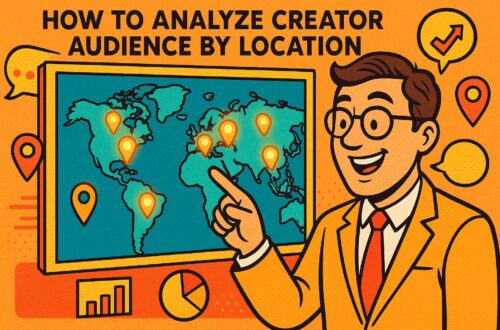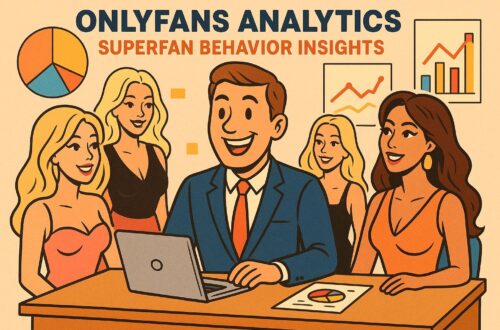Data is reshaping how agencies identify and grow creators. Instead of relying on guesswork or basic metrics like follower counts, agencies now leverage advanced analytics to find creators with high revenue potential and loyal audiences. Here’s the core of what’s happening:
- Focus on Engagement Over Follower Counts: Agencies analyze audience behavior – like when and how people engage – to identify creators with paying fans.
- Predictive Analytics: Tools predict a creator’s future earnings based on trends like content frequency, audience growth, and seasonal patterns.
- Specialized Metrics: Metrics like Fan Devotion Scores help pinpoint creators with deeply engaged, financially committed audiences.
- Real-Time Monitoring: Agencies track key metrics live to adjust strategies quickly and capitalize on growth opportunities.
- Tools Like NimbusReach: Platforms offer features like growth alerts, audience insights, and predictive models to streamline creator discovery and scaling.
The takeaway? Agencies now prioritize fewer creators with higher earning potential, using data to make smarter decisions while avoiding wasted resources.
OFM Debate: Vertical vs Horizontal Scaling | Which is better?
Data and Analytics Methods Agencies Use
Agencies are leveraging advanced analytics to better predict revenue opportunities and pinpoint the best times to initiate partnerships. By combining multiple data sources, they build detailed creator profiles that highlight earning potential. These strategies are then refined further through predictive analytics, as outlined below.
Audience behavior analysis focuses on studying follower interactions and engagement trends to identify creators whose audiences are likely to convert into paying customers. Meanwhile, revenue prediction models rely on past performance data to estimate future earnings. These models consider factors like content frequency, audience growth, and seasonal trends to forecast revenue over the next 6 to 12 months. Such insights enable agencies to prioritize outreach efforts and allocate resources more effectively.
Predictive Analytics for Creator Growth
Predictive analytics transforms raw data into practical insights about a creator’s potential. For instance, audience segmentation analysis breaks followers into distinct groups based on their engagement habits and spending behaviors. On the other hand, engagement forecasting uses machine learning to predict how audiences will respond to different types of content. Revenue trend analysis examines earning patterns among similar creators, helping agencies identify growth trajectories and seasonal shifts.
The most accurate predictive models combine platform-specific data with external signals, such as search trends and activity across multiple platforms. This broader approach provides a clearer picture of a creator’s current market position and potential for future growth.
Using Specialized Metrics Like Fan Devotion Scores
Metrics like follower count only scratch the surface when it comes to evaluating revenue potential. While predictive models focus on estimating future growth, specialized metrics like Fan Devotion Scores dive deeper into the quality of a creator’s engagement. These scores assess factors like the quality of comments, repeat interactions, and cross-platform follower activity to identify creators with truly committed audiences.
Tools like superfan identification and audience quality indicators work together to pinpoint followers who actively engage with content and are likely to spend money. For example, NimbusReach’s Fan Devotion Score measures deep audience engagement, helping agencies zero in on creators whose audiences aren’t just interested but financially invested. This allows agencies to prioritize creators with audiences that demonstrate meaningful financial commitment.
Tracking and Measuring Creator Performance
Forecasting is just one part of the equation – ongoing measurement is equally important for refining strategies. Real-time monitoring provides up-to-the-minute insights into key metrics, allowing agencies to adjust strategies quickly and optimize posting times or content formats.
Historical benchmark analysis compares a creator’s current performance to their past results and industry averages, highlighting those who are gaining momentum versus those who may be stagnating. Additionally, cross-platform correlation tracking examines how success on one platform influences performance on others, helping identify creators with strong personal brands that resonate across multiple audiences.
Metrics like growth velocity measurements track how quickly creators are increasing followers, engagement, and revenue. Similarly, audience retention analysis measures how long followers remain engaged. Creators with high retention rates often have more stable revenue streams, making them safer and more appealing partners for agencies.
Case Studies: Data-Driven Scaling Success Stories
Agencies are increasingly turning to data analytics to supercharge creator partnerships. By focusing on the right metrics, they’re transforming these collaborations into profitable ventures. Let’s dive into a few standout examples where data-driven strategies have reshaped how agencies approach creator partnerships.
Finding High-Value Creators with Superfans
Benefit San Francisco revamped its influencer strategy by teaming up with a specialized analytics partner to analyze creator data from platforms like Instagram and TikTok. Instead of prioritizing creators with massive follower counts, they zeroed in on engagement rates and audience quality. This shift allowed them to identify beauty creators with truly dedicated fanbases. The result? 22 successful campaigns and a stronger connection with their target audience.
The real game-changer was moving beyond surface-level metrics. With platforms capable of analyzing millions of creators across 30+ data points, agencies can now filter by engagement, audience loyalty, and niche relevance. The data revealed that creators with high Fan Devotion Scores often outperform those chosen based solely on follower count. Why? Because superfans – those who actively engage and spend – drive more revenue per follower than larger, less-engaged audiences. Smaller creators with passionate followers can pack a much bigger punch than their larger counterparts.
Custom Content and Messaging Strategies
Advanced metrics have also opened the door to highly tailored content strategies, unlocking new revenue opportunities. With data insights, agencies can craft content that resonates deeply with specific audience segments, leading to higher engagement and better conversion rates. When content aligns with genuine product reviews and audience interests, the results speak for themselves.
AI-powered tools play a big role here, analyzing which types of posts – whether tutorials, behind-the-scenes looks, or product demos – generate the most excitement among superfans. Real-time data allows agencies to tweak messaging on the fly, ensuring creators stay ahead of ever-changing algorithm trends.
Measurable Scaling Results
The impact of these tailored, data-driven strategies is clear in the numbers. Agencies using predictive analytics report that creators often see double-digit percentage increases in engagement, with top performers achieving monthly earnings growth of over 50%. Revenue tracking also reveals a striking pattern: the top 0.1% of creators consistently generate the majority of agency income. By leveraging platforms equipped with advanced fraud detection and audience authenticity checks, agencies can avoid wasting resources on creators with fake engagement and instead maximize their return on investment.
Before-and-after metrics paint a compelling picture. Agencies measure success through revenue growth (in USD), improved engagement rates (likes, comments, shares), and increases in follower or subscriber counts. One of the most telling metrics is revenue per follower, which skyrockets when agencies focus on creators with genuine superfans rather than broad, disengaged audiences.
Platforms like NimbusReach make tracking these results easier than ever. By providing real-time growth alerts and notifications when creators hit key milestones, agencies can quickly pivot strategies. This allows them to double down on campaigns that work and identify creators ready for expanded partnerships or larger investments. It’s a win-win: smarter decisions and better outcomes.
sbb-itb-bd3d2dc
Tools and Platforms for Predictive Analytics
Behind every success story in creator scaling lies a powerful platform that transforms raw data into actionable insights. Modern SaaS tools have become essential for agencies, replacing guesswork with precise, measurable strategies. These platforms leverage data-driven practices to give agencies a competitive edge in identifying and scaling creators.
Key Features for Creator Discovery and Analytics
The best platforms offer advanced features that go far beyond basic social media monitoring. They include tools that streamline operations and deliver results with precision:
- Advanced filtering and targeting: Agencies can filter creators by niche, engagement rates, audience demographics, and earnings potential. This eliminates the need for manual profile reviews, saving time and ensuring resources are focused on creators with real growth potential.
- Real-time growth alerts: These alerts notify agencies of key milestones, such as a creator hitting a growth spurt or experiencing a spike in engagement. This allows for timely outreach, ensuring agencies can initiate partnerships when creators are most receptive.
- Bulk export tools: By automating data collection and organizing creator profiles for outreach, these tools free up time for agencies to focus on strategic tasks.
How NimbusReach Supports Agency Growth

NimbusReach takes these features to the next level with tools specifically designed to help agencies scale their operations. One standout feature is its proprietary Fan Devotion Score, which goes beyond standard engagement metrics to identify creators with loyal, paying fans. This score analyzes signals from across the web to pinpoint creators with "superfans" – the kind of audience that drives the majority of revenue for agencies. By integrating this score into predictive models, NimbusReach helps agencies make smarter partnership decisions and forecast growth more accurately.
The platform also offers detailed analytics and audience insights for creators on OnlyFans and Instagram, enabling agencies to make data-driven decisions when structuring partnerships.
Growth alerts and notifications provide a critical timing advantage. When a creator’s metrics indicate upward momentum, agencies are immediately informed, giving them the chance to secure partnerships with rising stars before competitors step in.
Beyond discovery, NimbusReach includes a content ideation tool that analyzes trends and suggests content strategies based on what has performed well for similar creators. This helps agencies support their creators in producing content that resonates with their audience, boosting both performance and revenue.
NimbusReach’s pricing is designed to grow with agencies. Plans start at $25/month for 250 profile views and scale up to $150/month for 5,000 views. This flexible pricing ensures agencies can expand their usage as their creator roster grows, without paying for more than they need.
Additionally, the platform’s export capabilities make it easy for agencies to integrate these insights into their existing workflows, reducing friction and enabling smoother operations.
Best Practices for Scaling Creators with Data
Using data-driven insights effectively can help agencies scale creators with greater precision and efficiency. Success in this area often boils down to strategic resource management aimed at maximizing ROI. Agencies that consistently achieve growth focus on optimizing their resources while keeping risks in check.
Focusing on High-Potential Creators
When it comes to creator partnerships, prioritizing quality over quantity is key. Instead of spreading resources thin across numerous mid-tier creators, agencies should zero in on high-potential talent with genuine earning capacity.
The secret lies in tracking real-time audience behavior rather than relying solely on static metrics. This involves monitoring engagement trends, the pace of audience growth, and the depth of fan interactions as they happen. Agencies that excel in this area look past surface-level popularity and seek out creators with a clear vision and unwavering commitment.
A guiding principle here is to focus on "views, not vanity." This means prioritizing meaningful engagement that drives revenue over superficial metrics like follower counts. By doing so, agencies can identify creators who truly connect with their audiences.
The most profitable partnerships often come from a select few creators who have cultivated "superfans" – dedicated followers willing to pay premium prices for exclusive content or experiences. Identifying these creators and nurturing their growth can yield far better results than working with a large pool of average performers.
To stay ahead, agencies must also ensure their predictive models stay sharp and responsive to changing market dynamics.
Updating Predictive Models Regularly
Predictive models are powerful tools, but their accuracy can degrade over time as audience preferences, platform algorithms, and market conditions shift. To maintain a competitive edge, agencies need to refresh these models frequently – sometimes as often as weekly or monthly.
As one expert put it:
"The beauty of machine learning is that as algorithms analyze more data over time, they generate smarter predictive models with each refresh".
Agencies typically use three strategies to decide when updates are necessary:
- Seasonal Refreshing: Updating models ahead of predictable changes, like holiday seasons or emerging trends.
- Measurement-Based Refreshing: Monitoring model performance and triggering updates when accuracy dips significantly.
- Activity-Based Refreshing: Scheduling updates as part of new campaign strategies to anticipate shifts in behavior.
To enhance the effectiveness of these models, agencies pull from a wide range of data sources, including transactional, demographic, and psychographic information. This diverse data pool allows machine learning algorithms to uncover complex patterns that simpler approaches might miss.
Refining models also involves balancing sensitivity (how well the model identifies high-potential creators) and specificity (its accuracy in predicting creators unlikely to succeed). By adjusting these metrics through data sampling, agencies can align their models with specific goals.
Of course, all of this must be done while adhering to strict data privacy standards.
Following Data Privacy Rules
Strong data privacy practices are essential for maintaining trust and complying with regulations. Agencies that collect and analyze creator data must adhere to laws like GDPR and CCPA, as well as platform-specific rules about data usage.
Being transparent about data collection and usage builds trust with both creators and audiences. This includes clearly explaining what data is being gathered, how it will be used, and offering opt-out options for those who prefer not to participate.
Staying compliant with platform policies is equally important. Agencies that keep up with evolving rules can avoid disruptions like account suspensions or legal issues.
To protect sensitive information, agencies should implement robust security measures such as encrypted storage, restricted access, and regular security audits. A single data breach can cause significant reputational damage and financial penalties. Additionally, automated data retention policies can help by deleting outdated information, reducing storage costs, and improving model performance – all while showcasing responsible data management to creators and regulatory bodies.
Conclusion: The Future of Data-Driven Creator Scaling
Agencies that integrate data-driven strategies are setting themselves up for lasting success. The research and examples discussed throughout this analysis highlight a clear takeaway: agencies that rely on predictive analytics and focused metrics consistently achieve better outcomes compared to those sticking with older, volume-based discovery methods.
The shift toward precision over quantity has become the hallmark of effective creator scaling. Top-performing agencies are using advanced analytics to pinpoint creators with real earning potential and deeply engaged audiences. This approach not only ensures a higher return on investment but also minimizes wasted time and resources on partnerships that don’t deliver significant results.
Predictive analytics is now the backbone of modern creator scaling. By examining real-time data on audience behavior, engagement trends, and growth patterns, agencies can make smarter decisions about which creators to prioritize. Metrics like fan loyalty scores and authentic engagement rates offer a depth of insight that simple follower counts cannot provide.
Equally important is the need for continuous model updates. As platform algorithms evolve and audience preferences shift, agencies must regularly refine their predictive models to stay accurate. Keeping these models up-to-date ensures that insights remain actionable in a fast-changing digital world.
Platforms like NimbusReach are simplifying these processes by offering agencies robust analytics, advanced search tools, and proprietary scoring systems. Features such as growth alerts and bulk export tools allow agencies to scale their operations efficiently while maintaining the precision needed to identify creators with high potential. These tools are paving the way for a future where smart data use drives sustainable growth.
The agencies poised for long-term success will be those that combine cutting-edge analytics with strong data ethics. By staying transparent, following privacy regulations, and prioritizing genuine creator-audience relationships, these agencies are building growth models that benefit everyone involved.
FAQs
How do agencies identify creators with the highest earning potential using data?
Agencies rely on data analytics to evaluate creators by diving into critical performance metrics like audience engagement, fan loyalty, and revenue patterns. By zeroing in on creators with superfans – dedicated followers who are willing to pay for content – they can identify those with strong growth opportunities and high earning potential.
With the help of advanced tools like predictive analytics and in-depth performance tracking, agencies can make data-backed decisions. This strategy allows them to prioritize creators who are more likely to generate substantial revenue, instead of spreading resources across a larger group of mid-tier performers.
How do metrics like Fan Devotion Scores help agencies evaluate creator engagement?
Fan Devotion Scores offer a practical way to measure the strength of a creator’s bond with their audience. By evaluating elements like emotional connection and audience commitment, these scores highlight creators who have deeply engaged and loyal followers.
For agencies, this means zeroing in on creators with passionate superfans – those who actively support and contribute to growth. This data-driven approach helps agencies make smarter decisions to scale their business efficiently.
Why do agencies need to keep their predictive models up to date when scaling creators?
Keeping predictive models up to date is crucial because creator performance and audience engagement can change rapidly. If models become outdated, predictions may miss the mark, making it tougher to pinpoint creators with loyal, paying fans.
By consistently updating these models, agencies can make better, data-backed choices, concentrate their resources on creators with the most potential, and fine-tune their outreach strategies. This approach helps them stay ahead in the ever-evolving digital space, ensuring steady revenue and growth.





